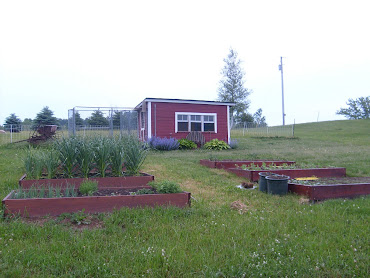As it appears on the SSS site,.......I didn't change a single word.....
.
"Shetland sheep have for generations been noted for their very soft and well crimped fleece. The wool is the finest of all native breeds and shows an amazing variety of colours and patterns. There are 11 main whole colours and 30 recognised markings.
By selecting from coloured fleeces a range of naturally coloured yarn can be produced. This eliminates the need for dyeing and therefore retains the soft feel of the natural fibre and is favoured by those who prefer a totally natural approach.
Shetland wool fibres are of a simple construction with a central cortex covered by a thin scaly cuticle, and have an average diameter of about 23 microns. However there is a range from 10 to 20 microns for neck and shoulder wool to 25 to 35 microns for britch wool. The average staple length is 3.5 inches. The amount of crimp varies, and is important in providing the 'bounce' required for knitwear. There is a positive correlation between fineness and crimp, with wool of the finest quality being crimped at between 8 and 12 to the inch.
Wool from Shetland sheep is used to produce gossamer lace, the famous 'Fair isle' knitwear, and fine tweeds.
Pure bred Shetland sheep tend to shed their fleece in spring. The growth of new fleece can cause a rise or weak point and where this is present the fleece can sometimes be plucked or 'rooed' by hand. The timing of this can be different in each sheep, however, it is worth taking the care to get it right as rooed fleece can be amongst the softest because the fibres have no harsh cut ends as occurs with a sheared fleece.
Shetland fleece can be handspun straight from the fleece or made into rolags and then woollen spun. It can also be worsted spun by hand, used on a peg loom or handwoven. It also felts well using either dry or wet methods.
When processed commercially the wool can be made into the finest lightweight worsted cloth or heavier weight, harder wearing fabrics and tweeds."
 |
| Champion line up for 2010 |
 |
| 2005 winner - Kate Sharp's Ewingston Cracker |
The statement at the beginning seems to support Appendix A.
Happy New Year Everyone............TaTa till 2011



Of course it does, and all those who don't think we should be following lock-step with those in closer to the breed's origins would say that's a good reason NOT to adopt Appendix A. I disagree, but that's no secret....
ReplyDeleteBeautiful sheep; I think they look very similar to a lot of the sheep in your photo gallery along the right side of your blog!!!
I didn't think my sheep look like the ones on their site, but that's what I'm working towards. If the good Lord is willing and the creek don't rise, I may get there in about 20 yrs. (grin)
ReplyDeleteI guess I've never heard a good case for NOT falling in step with the UK ideal for our little Shetland wonders.
I think this is the best and most concise description of what a Shetland sheep is. Thanks for the reminder, Kelly.
ReplyDeleteah yes. 1927 standard shetlands. What a beautiful sight to see...
ReplyDelete